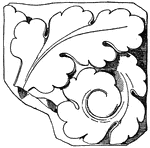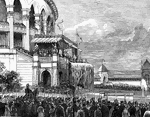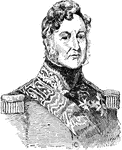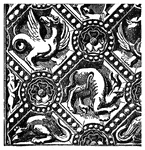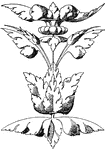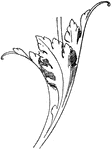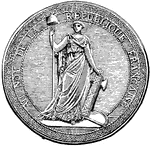
Napoleon Returning to France
"Not made on the spot but probably presenting approximately the king of equipage in which Napoleon traveled.…

The Arena of Nîmes
The arena of Nîmes is a Roman amphitheater located in city of Nimes, France. The amphitheater was built…
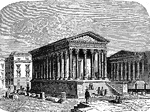
The Square House of Nîmes
The square house of Nîmes is also known as Maison Carree. It is an ancient Roman temple located in…

Notre Dame
"The present structure, begun in 1163 and completed about 1240, suffered severely during the French…
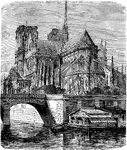
Notre Dame Cathedral
An illustration of Notre Dame Cathedral in Paris, France. This building is also known as Notre Dame…

Section of Notre-Dame du Port
"It was in Central France, and mainly along the Loire, that the systematic development of vaulted church…

Opera House
An illustration of The Opera House in Paris, France. It is commonly known as the Paris Opera. This Opera…

View of the Opera House in Paris
The Palais Garnier, also known as the Opéra de Paris or Opéra Garnier, but more commonly as the Paris…
Trophy Panel Slab
This trophy panel slab was designed on a quay front (dock) in Missileries, Paris, France.

Grill Panel
The grill panel is a German 16th century design found on the pulpit steps in Thann, France

Grill Panel
The grill panel is a German 16th century design found on the pulpit steps in Thann, France
Thinner Trophy Panel
This thinner trophy panel was designed on a quay front (dock) in Missileries, Paris, France.
![The Panthéon (Latin Pantheon, from Greek Pantheon, meaning "Every god") is a building in the Latin Quarter in Paris, France. It was originally built as a church dedicated to St. Genevieve, but after many changes now combines liturgical functions with its role as a famous burial place. It is an early example of Neoclassicism, with a façade modeled on the Pantheon in Rome, surmounted by a small dome that owes some of its character to Bramante's "Tempietto". Located in the 5th arrondissement on the Montagne Sainte-Geneviève, the Panthéon looks out over all of Paris. Its architect, Jacques-Germain Soufflot, had the intention of combining the lightness and brightness of the gothic cathedral with classical principles. Soufflot died before his work was achieved, and his plans were not entirely followed. The transparency he had planned for his masterpiece was not attained. Nevertheless, it is one of the most important architectural achievements of its time and the first great neoclassical monument."Toward the end of the reign of Louis XV. a reaction set in, which was caused partly by the excess and caprice displayed in the application of this style, and partly by the tide again setting in the direction of the antique. This evidence by the Colonnades de la Place de Concorde, and by the Church of Ste. Geneviève, which was begun by Soufflot in the year 1755, and subsequently received the name of Pantheon [shown here]. From thenceforth imitations of ancient buildings came into vogue, as they also did in other countries."](https://etc.usf.edu/clipart/73700/73751/73751_pantheon_mth.gif)
West Front of the Pantheon at Paris
The Panthéon (Latin Pantheon, from Greek Pantheon, meaning "Every god") is a building in the Latin…

Modern French Parapet
The modern French parapet is a design found on the Hotel Mirabeau in Paris, France.

Paris Opera House
The Paris Opera House was built by architect Charles Garnier, who was chosen by Emperor Napoleon III.…
![The Musée du Louvre or officially the Grand Louvre — in English, the Louvre Museum or Great Louvre, or simply the Louvre — is the national museum of France, the most visited museum in the world, and a historic monument. It is a central landmark of Paris, located on the Right Bank of the Seine in the 1st arrondissement (neighborhood). Nearly 35,000 objects from the 6th century BC to the 19th century are exhibited over an area of 60,600 square meters (652,300 square feet)."Du Cerceau, who flourished during the reign of Henry IV., connected the block of buildings which belong to the Louvre, and had been constructed under Catherine dei Medici, by a gallery with the Tuileries. This architect abandoned the characteristic feature of the French Renaissance, which had prevailed hitherto, namely, of giving its peculiar columnar order to each storey, and assimilated his designs to those of the late Roman Renaissance, in which a striking effect was produced at the expense of truth by continuous columns and pilasters extending over several storeys and rows of windows.Although Du Cerceau was obligated to leave France in the year 1604, the impulse which he had given in the direction of the above-mentioned manner led to its being generally adopted. The new buildings were more correct, but less picturesque than those built during the earlier period of the French Renaissance, and a certain insipidity seems to characterize the various structures erected during the reigns of Henry IV., and especially Louis XIII. As is shown [here], a combination of free-stone and brick was restored to in such a way that the former was employed for the mouldings, and for the quoins and dressings of the doors and windows, whilst brick was used for the spaces between. In the case of the windows the free-stone introduced assumed the forms of quoins. If ornamentation had been previously excessive, it now retired into the background, and was only employed in moderation; and the method of its treatment began to be distinguished from that of the former period. The forms of the details above all began to lose in purity: rustications were inappropriately introduced in the walls and columns, and the roofs were made high and steep, which gave the rest of the building a heavy and squat appearance, whilst the numerous turret-shaped chimneys, which were necessitated by these high roofs, formed a peculiar feature in the construction."](https://etc.usf.edu/clipart/73700/73746/73746_royal_palace_mth.gif)
Paris, Royal Palace Façade
The Musée du Louvre or officially the Grand Louvre — in English, the Louvre Museum or Great Louvre,…

The Opera, Paris
"Erected 1861-1875. Covers nearly three acres and cost $7,000,000. A huge dome extends over the auditorium.…
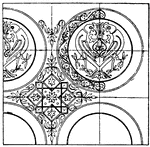
Textile Pattern
This textile pattern is a 12th century design made of silk and gold. It is found in a tomb in the Abbey…

The Turgot Pavilion
The Turgot Pavilion is part of the Louvre Palace which is located along the Seine river in Paris, France.…
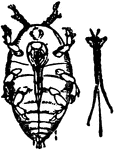
Phylloxera
"Pylloxera is a genus of insects allied to the Aphis and Coccus families. The Phylloxeridæ attach…
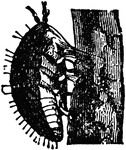
Phylloxera
"Pylloxera is a genus of insects allied to the Aphis and Coccus families. The Phylloxeridæ attach…
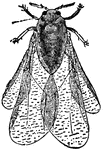
Phylloxera
"Pylloxera is a genus of insects allied to the Aphis and Coccus families. The Phylloxeridæ attach…
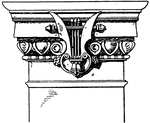
Modern Doric Pilaster Capital
This modern Doric pilaster capital is found in the new Opera House in Paris, France. It has an egg-and-dart…
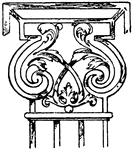
Wrought-Iron Pilaster Capital
This wrought-iron pilaster capital is a 17th century design found in the castle of Athis-Mons, Paris,…

Sheet Piling
"F. Wall of sheet-piling at Havre, France, with earth embankment behind the piles." -Whitney, 1911
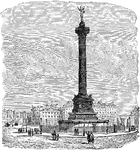
Place de la Bastille
An illustration of the Place de la Bastille which is a square in Paris where the Bastille Prison once…
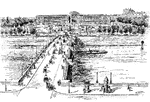
Place de la Concorde
An illustration of the Place de la Concorde in Paris, France. It is the largest square in the French…

Raymond Poincaré
A French statesman who served as Prime Minister of France on 5 separate occasions, as well as President…

Pont des Arts and the Louvre
An illustration of the Pont des Arts and the Louvre in Paris, France. The Pont des Arts is a bridge…
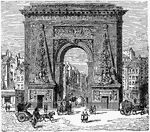
Porte St. Denis
An illustration of the Porte Saint-Denis which is a Parisian monument located at one of the gates of…

Coffee Pot
This coffee pot was made in Paris, France. It has a geometric like engraving of leaves and scrolls.

Lower Part of Column Profiled Shaft
The lower part of column profiled shaft is a design found in the Palais du Commerce in Lyons, France.
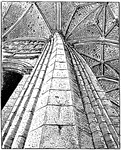
Refinement
"Architectural Refinement from Church of St. Quentin, France ... deviations from the geometrical…

Regency Style
"Regency Style; motive from Hotel Soubise, Paris ... in the history of the fine arts in France,…

Cathedral of Rheims
The Cathedral of Rheims is also known as Notre-Dame de Rheims in French. It is a Roman Catholic Cathedral,…

Richelieu
Armand Jean du Plessis de Richelieu, Cardinal-Duc de Richelieu (September 9, 1585 – December 4, 1642),…
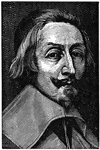
Cardinal Richelieu
Armand Jean du Plessis de Richelieu, Cardinal-Duc de Richelieu (9 September 1585 – 4 December…

Robespierre
An influential figure in the Committee of Public Safety of France and was instrumental in the period…

A Roman Aqueduct
"The Pont du Gard near Nimes (ancient Nemausus) in southern France. Built by the emperor Antoninus Pius.…
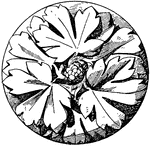
Early Gothic Boss Rosette
The early gothic boss rossette is made of three divisions. Designed in 1240, it is found in the royal…
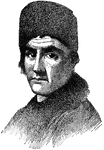
Jean Jacques Rousseau
A philosopher whose ideas influenced the French Revolution and the American Revolution.

Silk Scarf
This silk scarf was designed in france. It has a floral design that is done in both un-naturalistic…

The Session of August 4
Members of the Assembly gathered together on the night of August 4th, 1789, and drew up the Declaration…



